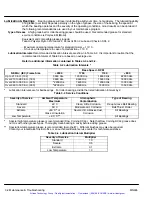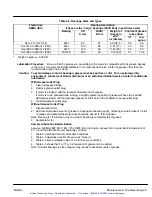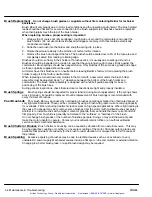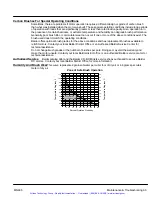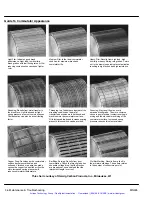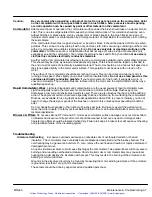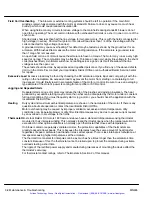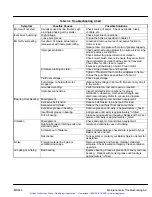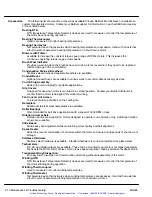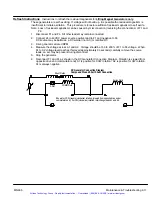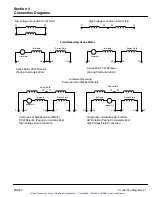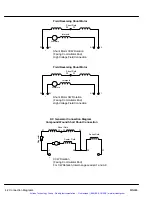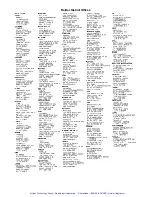
Section 1
General Information
3-6 Maintenance & Troubleshooting
MN605
Guide To Commutator Appearance
Light Film: Indicates good brush
performance. Light load, low humidity,
brush grades with low filming rates, or film
reducing contamination can cause lighter
color.
Medium Film: Is the ideal commutator
condition for maximum brush and
commutator life.
Heavy Film: Results from high load, high
humidity or heavy filming rate grades. Colors
not in the brown tones indicate contamination
resulting in high friction and high resistance.
Streaking: Results from metal transfer to
the brush face. Light loads and/or light
spring pressure are most common causes.
Contamination can also be a contributing
factor.
Threading: Is a further development of the
streaking condition as the metal
transferred becomes work hardened and
machines into the commutator surface.
With increased loads and increased spring
pressure this condition can be avoided.
Grooving: May result from an overly
abrasive brush grade. The more common
cause is poor electrical contact resulting in
arcing and the electrical machining of the
commutator surface. Increased spring
pressure reduces this electrical wear.
Copper Drag: Develops as the commutator
surface becomes overheated and
softened. Vibration or an abrasive grade
causes the copper to be pulled across the
slots. Increased spring pressure will
reduce commutator temperature.
Bar Edge Burning: Results from poor
commutation. Check that brush grade has
adequate voltage drop, that the brushes
are properly set on neutral and that the
interpole strength is correct.
Slot Bar Marking: Results from a fault in
the armature windings. The pattern relates
to the number of conductors per slot.
This chart courtesy of Helwig Carbon Products, Inc., Milwaukee, WI
Artisan Technology Group - Quality Instrumentation ... Guaranteed | (888) 88-SOURCE | www.artisantg.com











